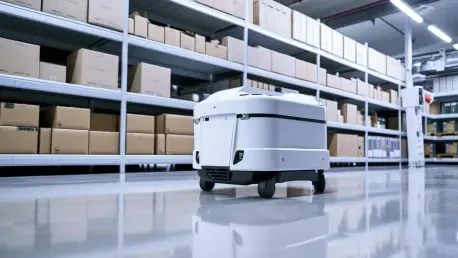Diving into the future of warehouse automation, I had the privilege of sitting down with Rohit Laila, a veteran in the logistics industry with decades of experience spanning supply chain and delivery. His passion for technology and innovation has positioned him as a thought leader in the field, and today we’re exploring his insights on a groundbreaking initiative called InnoScale—a new European test and demo center for warehouse automation solutions set to launch in the Netherlands. Our conversation touches on the unique vision behind this project, the role of the Netherlands as a hub for robotics, the ecosystem approach to connecting buyers and sellers, and the transformative potential of automation technologies in modern warehousing.
How did the vision for InnoScale come about, and what gap in the warehouse automation industry were you looking to address with this initiative?
The idea for InnoScale stemmed from a growing need for accessible, practical innovation in warehouse automation. Over the years, I’ve seen how fragmented the industry can be—great technologies exist, but they’re often out of reach for many companies due to high costs or lack of visibility. We wanted to create a platform that not only showcases cutting-edge solutions but also makes them testable and relatable. The gap we’re addressing is the barrier to entry for both new providers and potential buyers who need to see and experience automation in a real-world setting before committing.
What sets the InnoScale demo and test center apart from a typical sales showroom?
Unlike a traditional showroom, which is often just about displaying products for sale, InnoScale operates as a micro distribution center test house. It’s a living, breathing facility where technologies are put through their paces in realistic scenarios. Visitors can interact with systems hands-on, see how they integrate into workflows, and even test them with their own operational data. It’s about building confidence through experience, not just a polished sales pitch.
Can you elaborate on what you mean by describing InnoScale as an ‘ecosystem’?
Absolutely. By ecosystem, I mean a collaborative environment where every stakeholder in the automation space—buyers, sellers, innovators, and even industry bodies—can come together. At InnoScale, we facilitate connections by hosting events, demos, and matchmaking sessions. It’s not just a physical space; it’s a network where ideas and partnerships are born, helping to accelerate the adoption of automation solutions across the industry.
Why was the Netherlands chosen as the home for this innovation center?
The Netherlands was a strategic choice for several reasons. It’s a logistical powerhouse in Europe with a strong infrastructure and a forward-thinking approach to technology. Additionally, the support from local organizations has been instrumental in aligning our mission with broader goals of innovation and investment in the region. I believe the Netherlands has the potential to become a central hub for robotics and automation in Europe, given its connectivity and business-friendly environment.
What kind of support does InnoScale offer to companies looking to break into the European market?
We provide a comprehensive suite of services to ease the transition for new entrants. This includes everything from certification and legal assistance to marketing, sales support, and technical implementation. Our goal is to lower the risk and cost of entry—where traditional market entry might demand tens of millions in investment, we’ve structured our model to require significantly less, making it feasible for startups and smaller innovators to establish a foothold.
What types of automation technologies are you planning to showcase at the center?
We’re covering a wide spectrum of solutions, from robotics like automated guided vehicles and stacker cranes to advanced software systems. What’s exciting is that we’ll feature emerging technologies as well, ensuring we’re always at the forefront of innovation. For each category, we carefully select two providers to represent diverse approaches, giving visitors a balanced perspective on what’s available and what might best fit their needs.
How do you envision the future of warehouse automation, especially with concepts like the ‘lights out warehouse’ gaining traction?
The future is incredibly promising, with fully automated, or ‘lights out,’ warehouses becoming more realistic as technology advances. However, challenges remain—such as integrating complex systems seamlessly and addressing labor concerns. AI plays a huge role here, not just in optimizing operations through data analysis but also in enabling predictive maintenance and smarter decision-making. I believe we’re on the cusp of a major shift where automation doesn’t just support but truly transforms warehousing.
What is your forecast for the role of automation in shaping the logistics industry over the next decade?
I foresee automation becoming the backbone of logistics, driven by the need for efficiency and scalability amid labor shortages and space constraints. Over the next ten years, I expect to see widespread adoption of robotics and AI, with warehouses becoming more adaptive and intelligent. The key will be interoperability—ensuring systems can work together seamlessly. Initiatives like InnoScale will be crucial in bridging the gap between innovation and implementation, paving the way for a more connected and automated future.









